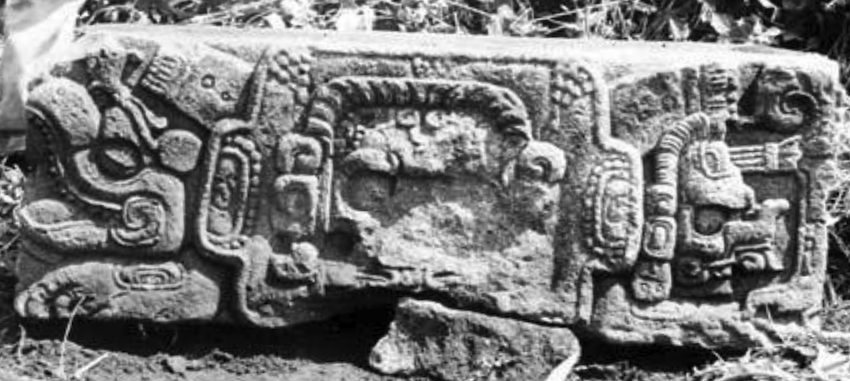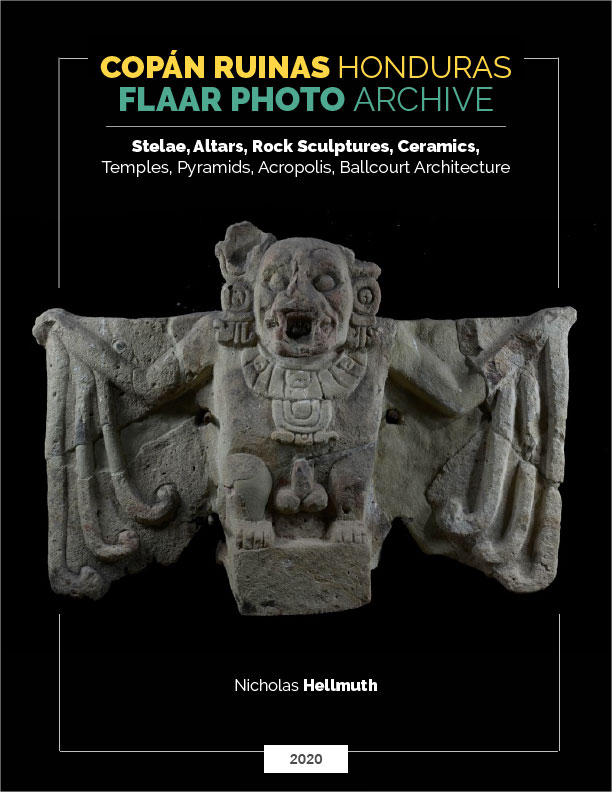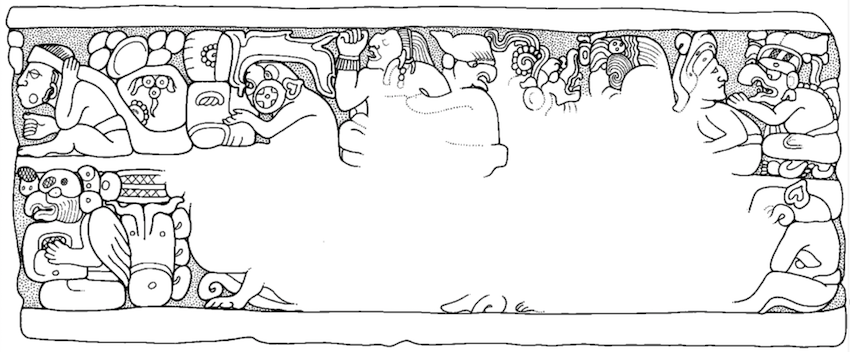Where is Copan Altar W’, Altar Wprime?
The 1994 book on Maya Sculpture of Copan by Claude Baudez says that Copan Altar W’ (Altar Wprime) is in the “local museum” (meaning the village museum of the town of Copan Ruinas). However during 2023-2024 this museum has been closed as it is being completely reconstructed (all the cacao trees removed that were around Copan Stela 7 because a solid tile floor has been placed over the entire surface of the room (so no more plants inside the museum). During our February 2024 field trip with IHAH permits we photographed Altar T and Copan Stela 7 in this village museum but did not see Altar W’. Perhaps it is in a back room? We wish to return to Copan to photograph the full-figure hieroglyphs on the back side and the Bufo Toad and God K (K’awil) on the front side.
If you know where Copan Altar W’ is stored during 2024, please let us know: FLAAR-Mesoamerica symbol FLAAR.org (put the actual @ symbol, close the space, and that is our contact).
The animal at the left is a Bufo Toad not a Turtle
Half the articles by epigraphers and iconographers call the animal head at the left a turtle. This is because a turtle is often coming out of the left of a 4-sided cave-entrance symbol. But on Copan Altar W’ there is no turtle on either side; the animal featured at the left is clearly a Bufo Toad (Bufo marinus, now named Rhinella marina). You can compare this head on Altar W’ with Uinal toads and with the head under the seated crocodile on the side of Copan Altar T. Fortunately lots of discussions by epigraphers and iconographers do correctly recognize the head as a toad (it’s not a frog).
Full-figure personified hieroglyphs on the back side of Copan Altar W’
Half the articles by epigraphers and iconographers call the animal head at the left a turtle. This is because a turtle is often coming out of the left of a 4-sided cave-entrance symbol. But on Copan Altar W’ there is no turtle on either side; the animal featured at the left is clearly a Bufo Toad (Bufo marinus, now named Rhinella marina). You can compare this head on Altar W’ with Uinal toads and with the head under the seated crocodile on the side of Copan Altar T. Fortunately lots of discussions by epigraphers and iconographers do correctly recognize the head as a toad (it’s not a frog).
References Cited for Copan Altar W’
If you Google “Copan Altar W’” you get lots of articles by epigraphers and iconographers. But the three books that feature Altar W’ are listed here in our References Cited:
- 1994
- Maya Sculpture of Copan, The Iconography. University of Oklahoma Press. 300 pages.
- 1920
- The Inscriptions at Copan. The Carnegie Institution of Washington, Publication No. 219. 643 pages.
- 2021
- The Archaeological Field Diaries of Sylvanus Griswold Morley: The Spy Years, 1917–1918. The Morley Diary Project, Volume II. Illustration assistance by Don S. Rice. 439 pages.
First posted February 14, 2024.




































